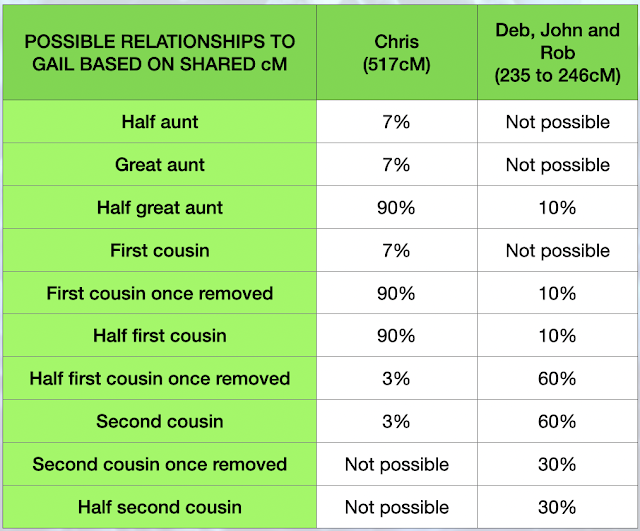MODULE 4 Preparation: "What are the Odds?" (WATO) tool at DNA Painter

These activities are designed to give you some familiarity with WATO prior to Module 4. To undertake these activities, you should register for a free DNAPainter.com membership if you don't already have one. Just do as much as you can. There's a link to a 30 minute video I've prepared to explain the case study HERE. If you have any questions, your can raise them in our discussion session or post them in Basecamp. Research question: What is Gail's relationship to Chris, Deb, John and Rob? This is an example of a DNA dilemma from my family. You were introduced to the case study during the Module 3 presentations. In the Module 4 presentations, we’ll take some twists and turns with the case study to look at the WATO tool. What we know: Gail is a shared match with Chris, Deb, John and Robert. Deb, John and Rob are siblings. Chris is their first cousin. Deb, John and Rob's mother, Pat, is the sister of Frank, Chris's father. Frank and Pat are the children of Jim

